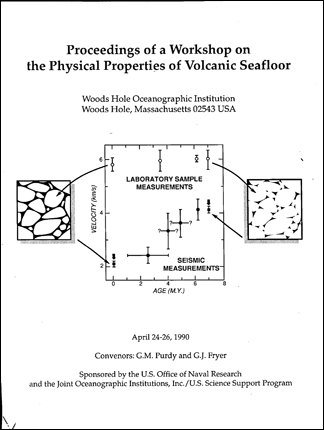Physical Properties of Volcanic Seafloor
April 24-26, 1990 – Woods Hole, Massachusetts
Convener: Gerard Fryer, Mike Purdy

Summary
The volcanic ocean floor, defined by the uppermost basaltic lavas of oceanic Layer 2, is the single largest and most consistent contrast in physical properties on the earth’s surface. More than 60 percent of our planet is coated by this boundary that constitutes a contrast in both compressional and shear wave velocity of several km/s. Propagation through the ocean floor, and reflection and scattering from it, cannot be understood quantitatively without a knowledge of the properties of this boundary.
A knowledge and understanding of the spatial variability in the structure of the uppermost oceanic crust is a key to the understanding of both the temporal and along-axis variability in accretion processes. This si currently one of the most important unknowns that blocks progress in the quantitative modeling of mid-ocean ridges.
The significance of this issues and the substantial progress in recent years towards their understanding prompted the organization of this workshop. The objectives of the workshop were to review our state of knowledge concerning the processes that control the physical properties of the uppermost several hundred meters of the igneous ocean crust and to describe the measurements and experiments that, during a 5-10 year long program would solve the key problems.
Organizing Committee
G. Michael Purdy, Woods Hole Oceanographic Institution
Gerard Fryer, University of Hawaii at Manoa






